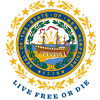Primary Care Office
Information about the Primary Care Office and how it works with other agencies and stakeholders to support and improve access to comprehensive, culturally competent, quality, primary health care services for underserved and vulnerable populations.
The Primary Care Office (PCO) works with other agencies and stakeholders to support and improve access to comprehensive, culturally competent, quality, primary health care services for underserved and vulnerable populations. This is done through three program areas: 1) Shortage Designation Coordination, 2) Statewide Primary Care Needs Assessment, and 3) Technical Assistance and Collaboration that Seeks to Expand Access to Primary Care.
Shortage Designation Coordination
The Rural Health and Primary Care (RHPC) Section works to ensure NH residents in all areas of the state have access to health care services by targeting the workforce. RHPC provides technical assistance to organizations and communities regarding the necessary steps for shortage designation and maintains communication with entities on program eligibility and the application process. The RHPC is also responsible for applying for new shortage designations and maintaining and updating existing designations.
What is a Shortage Designation?
Geographic areas, populations, and facilities with too few primary medical care, dental, and mental health providers and services. Providers that practice in and facilities that reside in a shortage designation are eligible to receive certain federal resources, including
- National Health Service Corps (NHSC) Students to Service Program - Funding health professions students while in school in exchange for a service commitment.
- National Health Service Corps (NHSC) Loan Repayment Program - Providing funds for health professionals to repay their student loans in exchange for a service commitment.
- Centers for Medicare and Medicaid Services (CMS) Bonus Payments - Enhanced CMS reimbursement.
Health Professional Shortage Areas (HPSAs)
Designations that indicate health care provider shortages in primary medical care, dental health, or mental health. These shortages are designated as one of three types:
- Geographic Area – A shortage of providers for the entire population within a defined geographic area.
- Population Groups (demographic) – A shortage of providers for a specific population group(s) within a defined geographic area (e.g. low income, homeless, etc.)
- Facilities (institutional) – A public or non-profit medical facility serving a population or geographic area HPSA, which also includes
- Correctional Facilities
- State Mental Hospitals
- Federally Qualified Health Centers (FQHCs)
- Federally Qualified Health Center Look-A-Likes (LALs)
- CMS-Certified Rural Health Clinics (RHCs)
Medically Underserved Areas and Populations (MUA/Ps)
Designations for geographic areas and populations with a lack of access to primary care services within a whole county, a group of neighboring counties, a group of urban census tracts, or a group of county or civil divisions. The following population groups within MUA/Ps may face economic, cultural, or linguistic barriers to health:
- Homeless
- Low-income
- Medicaid-eligible
- Native American
- Migrant farmworkers
Governor’s Exceptional Medically Underserved Population (E-MUP)
A NH policy for designation of areas where unusual local conditions create a barrier to the access to or availability of personal health services. Interested organizations would have a specific interest in participating in one of the following programs tied to this designation:
- Federally Qualified Health Center (FQHC) grant program
- FQHC Look-A-Like status
- J-1 Visa Waiver Program
- State Loan Repayment Program
Governor-Designated and Secretary-Certified Rural Health Clinic
A designation policy to account for circumstances where rural areas of the state experience ongoing barriers to health care access, yet fail to meet the criteria for other shortage designations due to certain parameters that are unrelated to changes in the availability and accessibility of primary care resources.
Statewide Primary Care Needs Assessment
The Primary Care Office uses geographic area and population data at county and sub-county levels to identify lack of access to primary care services; identify shortage of primary care providers; identify key barriers to access to health care; and identify the highest need for health services. The PCO also contains the Health Professions Workforce Data Center.
Shortage Designation Search Tools
Maps of Current Federally Designated Shortage Areas in NH



